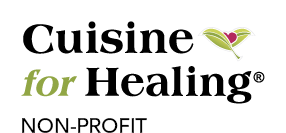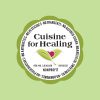Ever year the Environmental Working group spends countless hours researching all the toxic chemicals in our world. They do this in order to educate the public to help us make safer choices, in food, skin care products and household cleaning products just to name a few. This year they have reported 85,000 made-made chemicals exist in our world we were never meant to ingest.
Here is Dirty Dozen and The Clean Fifteen list for 2018:
This is a list of the top 12 fruits and vegetables that contain the highest levels of toxic chemicals and the top 15 fruits and vegetables that contain the lowest levels of toxic chemicals. Many times in the course of my classes people say, “How bad can it really be ?” or “Cant we just wash them off ?”
Well- I think when you read this you will have your answers and sadly it is not good news.
First, you can’t simply wash the toxic chemicals off. While you should always wash your fruits and vegetables to remove outside dirt and chemicals, this won’t help on the flesh of the food. When herbicides and pesticides are sprayed on the crops they are watered into the ground and taken in through the roots of the plant. They become apart of the food itself.
Second, these toxic chemicals must be detoxified out of your body or they cause great harm. If your toxic load is too great and your body can’t eliminate these toxins then they travel around and find a home in your body causing inflammation and disease as they accumulate. They may also act as endocrine and hormone disrupters which cause imbalance in our body and affect all manner of functioning.
I’m going to start with the top most toxic fruit on our list- Strawberries.
Here is what happens to a conventional strawberry as reported by the EWG:
Strawberries tested by scientists at the U.S. Department of Agriculture in 2014 and 2015 contained an average of 7.7 different pesticides per sample, compared to 2.3 pesticides per sample for all other produce, according to a new EWG analysis.
What’s worse, strawberry growers use jaw-dropping volumes of poisonous gases – some developed for chemical warfare but now banned by the Geneva Conventions – to sterilize their fields before planting, killing every pest, weed and other living thing in the soil.
The USDA’s 2014 and 2015 strawberry tests found that:
- Almost all samples – 99 percent – had detectable residues of at least one pesticide.
- Some 29 percent had residues of 10 or more pesticides.
- The dirtiest strawberry sample had residues of 21 different pesticides and breakdown products.
- Strawberry growers used 74 different pesticides in various combinations.
How hazardous are the chemicals used on strawberries? Some are fairly benign. But some are linked to cancer, reproductive and developmental damage, hormone disruption and neurological problems.
Second most toxic vegetable on the list- Spinach.
Here’s what happens to conventional spinach according to EWG:
Tests detected an average of almost seven pesticides on every conventionally grown spinach sample collected in 2015, with a maximum of 16 different pesticides or breakdown products on a single sample. Four pesticides – one insecticide and three fungicides – were responsible for the bulk of the residues detected on spinach.
Seventy-five percent of the samples contained residues of permethrin, a neurotoxic insecticide. At high doses, permethrin overwhelms the nervous system and causes tremors and seizures.
But several studies also find a link between lower-level exposure to permethrin-type insecticides and neurological effects in children. In one study, children with detectable permethrin residues in their urine were twice as likely to be diagnosed with ADHD as children with non-detectable levels of the pesticide. Three other previously undetected fungicides – mandipropam, fluopicolide and ametoctradin, which are used to kill mold and mildew – were found at relatively high concentrations on spinach samples. DDT, a pesticide long banned in the U.S., also showed up on spinach and very few other crops. Residues of DDT and its breakdown products were found on half of spinach samples. Although DDT was banned in the 1970s, residues remain in the soil and are picked up by spinach grown today.
The 12 fruit and veggies that are the most toxic according to EWG.org:
Strawberries, spinach, nectarines, apples, grapes, peaches, cherries, pears, tomatoes, celery, potatoes and
sweet bell peppers
While this news is very disheartening, there are things you can do:
- Buy organically grown fruits and vegetables or responsibly grown on farms that are kind to and respectful of our environment.
- Support the EWG- they are a nonprofit group with a huge voice that is acting as our voice in government. Visit EWG.org
- Make changes in your own household to earth friendly products and responsibly grown foods and livestock.
- Visit the CFH Educational resource page for the full list.
At Cuisine for Healing we are committed to bringing you the highest quality foods available.
Mother Nature has given us the most valuable source of healing right in our back yard if only we can be gatekeepers with the highest integrity.
I challenge all of you to make this happen!
Happy Healthy Living!
Dana









